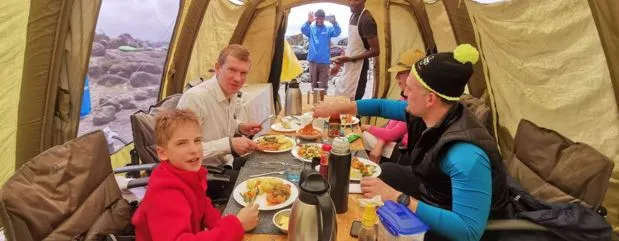Climbing for a Cause: How Kilimanjaro Inspires Global Resilience and Sustainable Tourism
Every generation faces its own mountains — challenges that test endurance, unity, and belief in progress. In Tanzania, one mountain has come to represent all three. Mount Kilimanjaro, Africa’s highest peak, rises as both a physical challenge and a metaphor for human resilience — a summit that calls to dreamers, adventurers, and changemakers from every corner of the world.
Those who climb with a trusted climb operator quickly discover that this journey extends far beyond the trail. It is an expedition in sustainability, economic empowerment, and cultural connection — a living model of what responsible global tourism can look like.
A Global Stage for Human Endurance
Kilimanjaro is climbed by over 30,000 people each year, yet each ascent tells a different story — charity treks for clean water, corporate challenges for social impact, or personal pilgrimages for growth.
What unites them all is intent. Every climber, from first-timers to seasoned explorers, becomes part of a narrative much larger than themselves — one that celebrates human spirit and global collaboration.
The climb has become a symbol of shared effort: local Tanzanian guides, international trekkers, and worldwide supporters working together to reach a common goal.
Sustainability at the Summit
Tourism on Kilimanjaro directly supports tens of thousands of families through guiding, portering, accommodation, and logistics — making it a vital pillar of East Africa’s eco-economy.
But sustainability goes beyond employment. Ethical operators ensure that the mountain’s delicate ecosystems remain intact through low-impact trekking policies, strict waste management, and fair porter welfare systems.
These practices are redefining how global adventure travel operates — proving that progress and preservation can coexist on the same path.
Understanding the True Value of the Climb
A Kilimanjaro climb cost breakdown reveals more than just numbers; it explains where responsibility lies. Fees contribute to park conservation, local wages, and safety standards that protect both climbers and communities.
Every dollar invested in ethical trekking circulates back into Tanzania’s economy — funding conservation initiatives, education projects, and sustainable tourism infrastructure.
For many local families, the mountain is not just geography; it’s livelihood.
From Local Peaks to Global Lessons
Kilimanjaro teaches something universal — that true success, whether on a mountain or in global policy, depends on shared responsibility. The summit is not achieved alone; it’s a collective victory made possible by teamwork, awareness, and respect for nature.
In an era defined by climate concern and cultural division, Kilimanjaro offers a different story — one of balance, cooperation, and hope.
A Summit for the World
At 5,895 metres, climbers stand above the clouds and see the curvature of the Earth. It’s a rare vantage point — one that makes borders feel irrelevant and human effort infinite.
Kilimanjaro reminds us that the challenges we face as a planet — sustainability, inequality, resilience — can be overcome the same way every summit is reached: one step at a time, together.




